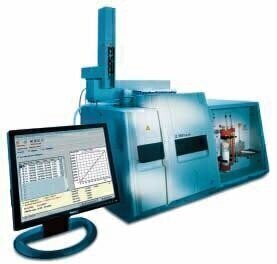Water/wastewater
TOC Analyser Improves NLS Lab Speed and Versatility
Sep 23 2009
A new TOC IL550 analyser from Hach Lange (Germany) is helping the Environment Agency’s National Laboratory Service (NLS) to increase sample analysis turnover and improve efficiency levels at its inorganic laboratory in Nottingham.
The analyser is used for the determination of dissolved organic carbon (DOC) and total organic carbon (TOC) in sewage, river, leachates, effluents and groundwater samples.
TOC analysis is vitally important in applications ranging from power generation, wastewater, drinking water, surface water and ultrapure water, to agricultural soils, contaminated land and food. Hach Lange analysers therefore offer a range of options designed to meet every need.
A key feature of the IL550 is particle tolerance in liquids. The autosampler needle has a large internal diameter and the sample is injected directly via the pneumatic port into the furnace – this eliminates blockages, cross-contamination or leaks because there is no septum or valve. This also removes the need to filter waste water samples because the IL550 measures the TOC of both liquid and solid particulates in a sample.
Samples are also stirred prior to injection to ensure homogeneity.
Through a national network of laboratories, the NLS team of scientists and support staff provide a dedicated service to waste and water industry professionals, environmental consultants and local authorities throughout the U.K.
Much of the analytical work performed by the NLS is for regulatory purposes, so it is vitally important that fast, accurate, reliable results are produced and in order to tailor analytical services to customer needs, NLS laboratories employ a sophisticated range of the latest laboratory instruments.
Richard Yates, Inorganic Analysis Team Leader at the NLS, said: “The high calibration range of the IL550 reduces the number of over-range repeat analyses we have to perform, thereby saving valuable lab time and improving the sampling process.
“We have numerous requirements from clients to analyse samples containing particulates and so the IL550 is ideal for this along with the more routine samples. In addition, the instrument is very easy to use and meets our required limit of detection.”
With the IL550, digestion takes place at up to 950oC and the solids module is able to increase the temperature to an unrivalled 1300oC. The UV version is equipped with a high-energy UV lamp, which offers the advantage of direct contact with the sample.
Digital Edition
IET 35.2 March
April 2025
Air Monitoring - Probe Sampling in Hazardous Areas Under Extreme Conditions - New, Game-Changing Sensor for Methane Emissions - Blue Sky Thinking: a 50-year Retrospective on Technological Prog...
View all digital editions
Events
Apr 30 2025 Ankara, Turkey
May 06 2025 Nuremberg, Germany
May 10 2025 Karachi, Pakistan
May 11 2025 Vienna, Austria
May 11 2025 Seoul, South Korea







_(4427399123)-(2).jpg)

.jpg)









